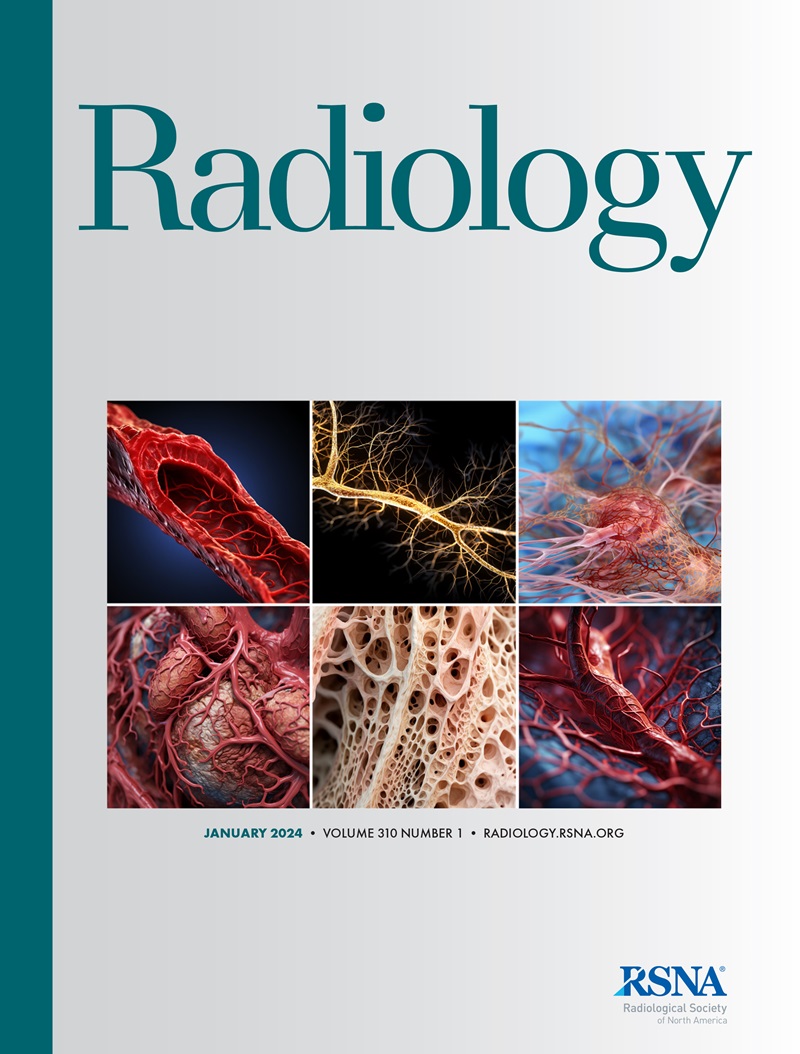求助PDF
{"title":"CT Colonography versus Multitarget Stool DNA Test for Colorectal Cancer Screening: A Cost-Effectiveness Analysis.","authors":"Perry J Pickhardt, Loredana Correale, Cesare Hassan","doi":"10.1148/radiol.243775","DOIUrl":null,"url":null,"abstract":"<p><p>Background Colorectal cancer (CRC) is largely preventable or curable with effective screening. Purpose To compare both the clinical efficacy and cost effectiveness of CRC screening with CT colonography (CTC) with those of multitarget stool DNA (mt-sDNA) testing. Materials and Methods A state-transition Markov model was constructed using updated natural history evidence for colorectal polyps applied to a hypothetical 10 000-person cohort representative of the 45-year-old U.S. population. Three screening strategies were modeled with these data: mt-sDNA testing every 3 years, the conventional CTC (CTC<sub>conv</sub>) strategy of immediate polypectomy for all polyps measuring at least 6 mm every 5 years, and the surveillance CTC (CTC<sub>surv</sub>) strategy of 3-year CTC follow-up for small polyps (6-9 mm) and polypectomy for large polyps (≥10 mm). Multifaceted model validation was performed to confirm robustness. A detailed sensitivity analysis was performed in addition to the base-case scenario. Results Without screening, the cumulative incidence of CRC was 7.5% (<i>n</i> = 752), which was reduced by 59% (<i>n</i> = 310) with mt-sDNA, 75% (<i>n</i> = 190) with CTC<sub>conv</sub>, and 70% (<i>n</i> = 223) with CTC<sub>surv</sub> screening. The estimated programmatic costs per person for no screening, mt-sDNA, CTC<sub>conv</sub>, and CTC<sub>surv</sub> were $4955, $6011, $4422, and $3913, respectively. The estimated cost per quality-adjusted life year (QALY) gained for mt-sDNA testing was $8878, whereas both CTC strategies resulted in cost savings. Accordingly, CTC strategies dominated over both mt-sDNA and no screening (ie, more clinically efficacious and more cost-effective [cost-saving]). However, the CTC<sub>conv</sub> strategy was not as cost-effective as the CTC<sub>surv</sub> strategy, as costs related to more optical colonoscopies did not offset the corresponding small gains in QALYs. The results were similar when CRC screening began at 50 and 65 years of age. Conclusion Both CTC screening strategies dominated over mt-sDNA screening and no screening, yielding cost savings and increased clinical efficacy. The CTC strategy consisting of 3-year surveillance for small colorectal polyps and colonoscopy referral for large polyps achieved the best overall balance of cost and clinical efficacy. © RSNA, 2025 <i>Supplemental material is available for this article.</i> See also the editorial by Galgano and Smith in this issue.</p>","PeriodicalId":20896,"journal":{"name":"Radiology","volume":"315 3","pages":"e243775"},"PeriodicalIF":12.1000,"publicationDate":"2025-06-01","publicationTypes":"Journal Article","fieldsOfStudy":null,"isOpenAccess":false,"openAccessPdf":"","citationCount":"0","resultStr":null,"platform":"Semanticscholar","paperid":null,"PeriodicalName":"Radiology","FirstCategoryId":"3","ListUrlMain":"https://doi.org/10.1148/radiol.243775","RegionNum":1,"RegionCategory":"医学","ArticlePicture":[],"TitleCN":null,"AbstractTextCN":null,"PMCID":null,"EPubDate":"","PubModel":"","JCR":"Q1","JCRName":"RADIOLOGY, NUCLEAR MEDICINE & MEDICAL IMAGING","Score":null,"Total":0}
引用次数: 0
引用
批量引用
Abstract
Background Colorectal cancer (CRC) is largely preventable or curable with effective screening. Purpose To compare both the clinical efficacy and cost effectiveness of CRC screening with CT colonography (CTC) with those of multitarget stool DNA (mt-sDNA) testing. Materials and Methods A state-transition Markov model was constructed using updated natural history evidence for colorectal polyps applied to a hypothetical 10 000-person cohort representative of the 45-year-old U.S. population. Three screening strategies were modeled with these data: mt-sDNA testing every 3 years, the conventional CTC (CTCconv ) strategy of immediate polypectomy for all polyps measuring at least 6 mm every 5 years, and the surveillance CTC (CTCsurv ) strategy of 3-year CTC follow-up for small polyps (6-9 mm) and polypectomy for large polyps (≥10 mm). Multifaceted model validation was performed to confirm robustness. A detailed sensitivity analysis was performed in addition to the base-case scenario. Results Without screening, the cumulative incidence of CRC was 7.5% (n = 752), which was reduced by 59% (n = 310) with mt-sDNA, 75% (n = 190) with CTCconv , and 70% (n = 223) with CTCsurv screening. The estimated programmatic costs per person for no screening, mt-sDNA, CTCconv , and CTCsurv were $4955, $6011, $4422, and $3913, respectively. The estimated cost per quality-adjusted life year (QALY) gained for mt-sDNA testing was $8878, whereas both CTC strategies resulted in cost savings. Accordingly, CTC strategies dominated over both mt-sDNA and no screening (ie, more clinically efficacious and more cost-effective [cost-saving]). However, the CTCconv strategy was not as cost-effective as the CTCsurv strategy, as costs related to more optical colonoscopies did not offset the corresponding small gains in QALYs. The results were similar when CRC screening began at 50 and 65 years of age. Conclusion Both CTC screening strategies dominated over mt-sDNA screening and no screening, yielding cost savings and increased clinical efficacy. The CTC strategy consisting of 3-year surveillance for small colorectal polyps and colonoscopy referral for large polyps achieved the best overall balance of cost and clinical efficacy. © RSNA, 2025 Supplemental material is available for this article. See also the editorial by Galgano and Smith in this issue.
CT结肠镜检查与多靶点粪便DNA检测用于结直肠癌筛查:成本-效果分析。
背景:通过有效的筛查,结直肠癌(CRC)在很大程度上是可以预防或治愈的。目的比较CT结肠镜筛查(CTC)与粪便多靶点DNA (mt-sDNA)筛查结直肠癌的临床疗效和成本效益。材料和方法使用更新的结肠直肠息肉的自然历史证据构建状态转移马尔可夫模型,应用于一个假设的45岁美国人口的10,000人队列代表。根据这些数据建立了三种筛查策略:每3年进行一次mt-sDNA检测,每5年对所有尺寸至少为6毫米的息肉进行立即息肉切除术的常规CTC (CTCconv)策略,以及对小息肉(6-9毫米)和大息肉(≥10毫米)进行3年CTC随访的监测CTC (CTCsurv)策略。进行多方面模型验证以确认稳健性。除了基本情景之外,还进行了详细的敏感性分析。结果未筛查时,CRC的累积发病率为7.5% (n = 752), mt-sDNA筛查降低59% (n = 310), CTCconv筛查降低75% (n = 190), CTCsurv筛查降低70% (n = 223)。未筛查、mt-sDNA、CTCconv和CTCsurv的人均预估项目成本分别为4955美元、6011美元、4422美元和3913美元。mt-sDNA检测获得的每个质量调整生命年(QALY)的估计成本为8878美元,而两种CTC策略都节省了成本。因此,CTC策略在mt-sDNA和不筛查(即临床更有效,更具成本效益[节省成本])中占主导地位。然而,CTCconv策略不如CTCsurv策略具有成本效益,因为与更多光学结肠镜检查相关的成本并不能抵消相应的QALYs的小收益。当结直肠癌筛查开始于50岁和65岁时,结果相似。结论CTC筛查策略优于mt-sDNA筛查策略和不筛查策略,可节省成本,提高临床疗效。由3年小结肠息肉监测和大息肉结肠镜转诊组成的CTC策略达到了成本和临床疗效的最佳整体平衡。©RSNA, 2025本文可获得补充材料。参见加尔加诺和史密斯在本期的社论。
本文章由计算机程序翻译,如有差异,请以英文原文为准。

 求助内容:
求助内容: 应助结果提醒方式:
应助结果提醒方式:


